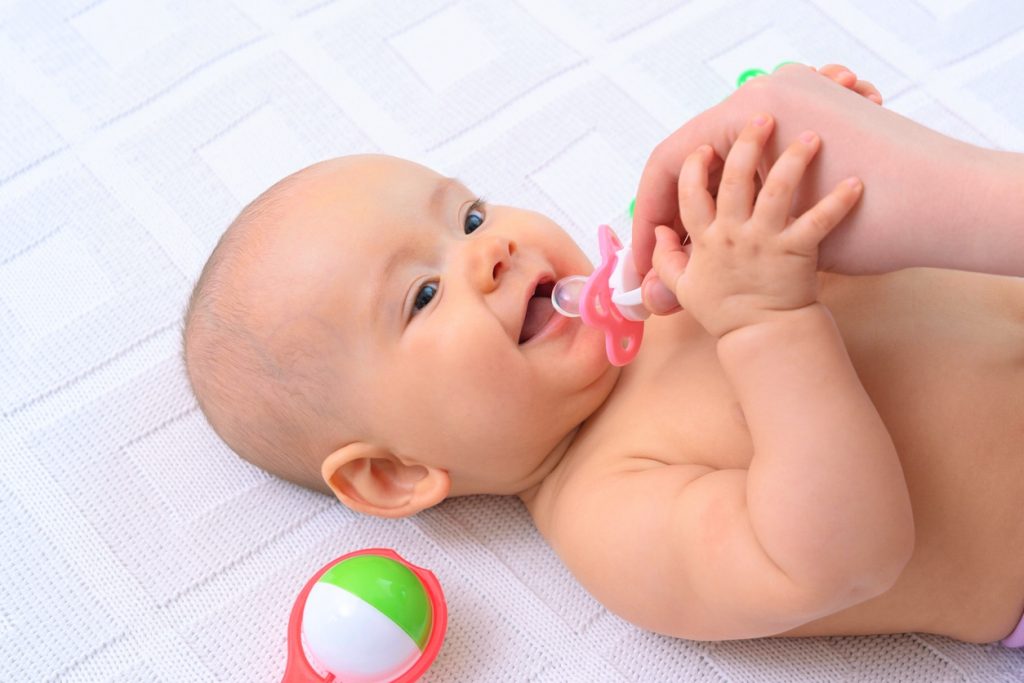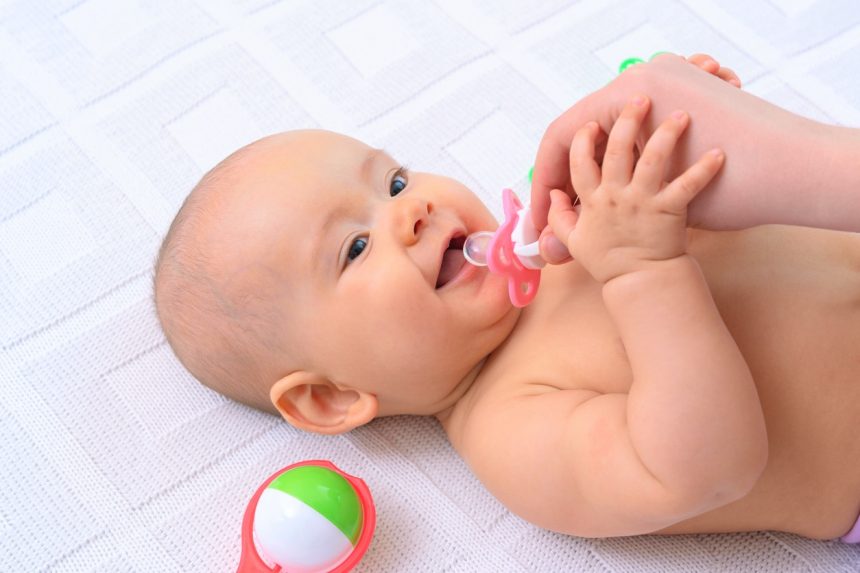For many new parents, a pacifier can quickly become an indispensable ally in the quest to soothe a fussy baby. These small, comforting objects offer relief and reassurance—mimicking the natural nipple and providing a sense of security. However, it can be frustrating to find that your little one seems unable to keep the pacifier in their mouth. Whether it keeps slipping out, is rejected entirely, or is promptly spit out, the struggle is real—and you’re not alone.
In this article, we’ll explore the common challenges parents face with pacifier use, and offer practical tips and innovative solutions to encourage your baby to embrace this soothing tool. With patience and the right approach, you can help your child find their comfort in the pacifier, making those precious moments a bit more peaceful for both of you.
Understanding the Root Causes of Pacifier Discomfort

When a baby struggles to keep a pacifier in their mouth, understanding the underlying reasons can be incredibly helpful for parents. Several factors may contribute to this discomfort, including the size and shape of the pacifier. If the pacifier isn’t a good match for the baby’s mouth, they may find it difficult to maintain a proper seal, leading to frustration. Additionally, a pacifier that is too large or heavy could cause discomfort and result in the baby spitting it out frequently.
Another potential factor could be the baby’s age and developmental stage. As infants grow and start to explore their surroundings, they become more adept at using their mouths, which can lead to increased curiosity about the pacifier itself. Sometimes, babies may simply prefer thumb-sucking as a self-soothing method, leaving them less inclined to use a pacifier. It’s also worth considering if the pacifier is clean and in good condition; issues like wear or contamination can affect a baby’s willingness to keep it in their mouth.
Creative Alternatives to Enhance Pacifier Retention
Keeping a pacifier in your baby’s mouth can sometimes be a challenge, but there are several creative solutions to enhance pacifier retention. One playful option is to use a pacifier clip adorned with fun designs or baby-friendly toys. These clips attach securely to your baby’s clothing, ensuring that the pacifier stays within reach, and makes it a little more enticing for baby to keep it in. Additionally, consider choosing a soft, flexible pacifier that your little one can comfortably hold onto, as their natural grip can help them maintain it in place.
Another interesting approach is to introduce a variety of textures and colors to the pacifier itself. Experimenting with **different shaped pacifiers** or ones that provide an **interactive experience**, such as those with squeaks or vibrations, could pique your baby’s interest. Moreover, softly swaddling your baby or using a cozy blanket can create a soothing environment, indirectly encouraging the infant to keep the pacifier in. Below is a simple table of materials you can use to enhance sensory experience:
| Material | Benefits |
|---|---|
| Silicone | Soft and durable, gentle on gums |
| Fabric | Provides comfort, can be soothing |
| Rubber | Natural elasticity, encourages grip |
| Wood | Eco-friendly, offers unique texture |
Practical Tips for Encouraging Pacifier Use
Encouraging your baby to use a pacifier can be a rewarding endeavor if approached thoughtfully. Here are some **practical tips** to help your little one get accustomed to their pacifier:
-
- Experiment with Timing: Introduce the pacifier during moments of calm, such as after a feeding or during a quiet time, rather than when your baby is upset.
-
- Offer Variety: Try different shapes and materials of pacifiers. Babies may prefer silicone over latex or vice versa.
-
- Parental Guidance: Show your baby how to use it by gently placing it in their mouth while making comforting sounds to associate the pacifier with soothing feelings.
-
- Make It Appealing: Look for pacifiers with cute designs or colors that might attract your baby more.
In addition to these tips, consider these strategies to create a positive pacifier experience:
| Tip | Benefit |
|---|---|
| Hold it close | Promotes a sense of security and comfort |
| Offer during sleep time | Helps soothe your baby to sleep while reducing the risk of SIDS |
| Use during teething | Provides relief and distraction from discomfort |
Choosing the Right Pacifier for Your Babys Needs
When it comes to selecting the ideal pacifier for your little one, several factors come into play. It’s essential to consider the pacifier’s material, as some babies may have sensitivities. Look for BPA-free silicone or rubber options that are both safe and easy to clean. Additionally, the shape and size should be appropriate for your baby’s age and developmental stage. A well-fitting pacifier will not only stay in place better but also provide the comfort your baby needs. **Here are a few characteristics to look out for:**
-
- Size: Ensure it’s appropriate for your baby’s age.
-
- Shape: Choices include orthodontic or traditional designs.
-
- Material: Opt for safe, non-toxic materials.
-
- Ease of Cleaning: Look for dishwasher-safe options.
Another key consideration is your baby’s specific preferences. Some babies may prefer rounded nipples, while others lean towards flat, breast-like shapes that mimic breastfeeding. It’s helpful to have a couple of options available to test which one your baby prefers. Additionally, observe how your baby interacts with the pacifier during different times of day—nap time, playtime, or soothing fits. **To help you navigate your choices, here’s a quick comparison table of popular pacifier types:**
| Pacifier Type | Benefits |
|---|---|
| Orthodontic | Promotes healthy jaw and teeth development. |
| Silicone | Durable, easy to clean, and maintains shape. |
| Natural Rubber | Soft and flexible, mimicking the texture of a nipple. |
Q&A
Q&A: Baby Can’t Keep Pacifier in Mouth? Tips and Solutions
Q: My baby seems to struggle with keeping the pacifier in their mouth. What could be causing this?
A: There are several reasons your little one might be having trouble with their pacifier. Their mouth muscles are still developing, and they may not have the oral coordination needed to keep it in place. Babies also exhibit varying preferences—some may simply prefer sucking on their fingers or the breast for comfort.
Q: Are there certain types of pacifiers that are easier for babies to keep in their mouths?
A: Absolutely! Pacifiers come in a range of shapes and sizes. Consider trying orthodontic pacifiers, which are designed to support healthy oral development. Additionally, pacifiers that have a contoured shape or those that are lighter in weight might be easier for your baby to manage. It may take some experimentation to find the right fit!
Q: How can I encourage my baby to keep their pacifier in their mouth longer?
A: Positive reinforcement can do wonders! When your baby keeps the pacifier in, give them a smile or gentle praise. You might also try to imitate the sucking motion while they hold the pacifier to demonstrate how to use it. Make sure your baby is calm and comfortable, as an upset baby is less likely to keep the pacifier.
Q: Is there a recommended age to stop using the pacifier, and should I be concerned if my baby isn’t interested?
A: The World Health Organization recommends weaning off the pacifier by 12 months. However, every baby is different! If your baby shows little interest in using a pacifier, it’s completely normal—they may find comfort in other ways. If you’re concerned, consulting with a pediatrician can provide reassurance.
Q: What are some creative solutions if my baby continues to reject the pacifier?
A: If your baby continues to resist, you might try introducing a variety of soothing alternatives such as soft toys, loveys, or even gentle rocking or swaddling. You can also try a teething toy, as they can provide similar comfort while catering to a different need.
Q: Any final thoughts for parents struggling with a pacifier issue?
A: Patience is key! Every baby is unique, and their preferences can change over time. Don’t pressure your little one, and be open to the possibility that they may prefer other methods of comfort. The journey of finding what works best for your baby can be both a challenge and a delightful adventure—embrace it!
Wrapping Up
navigating the world of pacifiers can be a journey filled with both challenges and little victories. While it’s perfectly normal for babies to struggle with keeping their pacifiers in place, understanding the reasons behind this can empower you to find effective solutions. From experimenting with different shapes and sizes to creating a calming routine, every small adjustment can make a big difference. Remember, each baby is unique, and what works for one might not work for another. Patience and a bit of creativity will be your best companions as you explore the options available. So, embrace this phase with an open heart and a sense of humor, knowing that, eventually, your little one will find their rhythm. Keep the love flowing, and may peaceful sleeps and happy moments be just around the corner!


